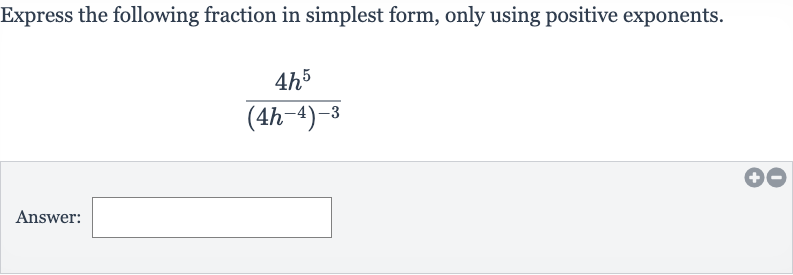AI tutor
Welcome to Bytelearn!
Let’s check out your problem:

Express the following fraction in simplest form, only using positive exponents.Answer:
Full solution
Q. Express the following fraction in simplest form, only using positive exponents.Answer:
- Simplify Denominator: Simplify the denominator.We have a negative exponent in the denominator, which we can simplify by using the rule that .
- Apply Negative Exponent: Apply the negative exponent to the denominator.Using the rule from Step , we can now apply the negative exponent to the denominator.
- Expand Exponent: Expand the exponent in the denominator.We will now expand the exponent in the denominator by multiplying the exponents.
- Combine Numerator and Denominator: Combine the numerator and the simplified denominator.Now we can combine the original numerator with the simplified denominator.
- Simplify Fraction: Simplify the fraction by dividing the coefficients and subtracting the exponents.We divide the coefficients and subtract the exponents of .=
- Express Negative Exponent: Express the negative exponent as a positive exponent.We have a negative exponent in the result, which we can express as a positive exponent by taking the reciprocal.
- Combine Terms: Combine the terms to express the final answer.The final answer is the product of the fraction and the reciprocal of to the positive exponent.
More problems from Multiplication with rational exponents
QuestionGet tutor help
QuestionGet tutor help
QuestionGet tutor help
QuestionGet tutor help
QuestionGet tutor help
